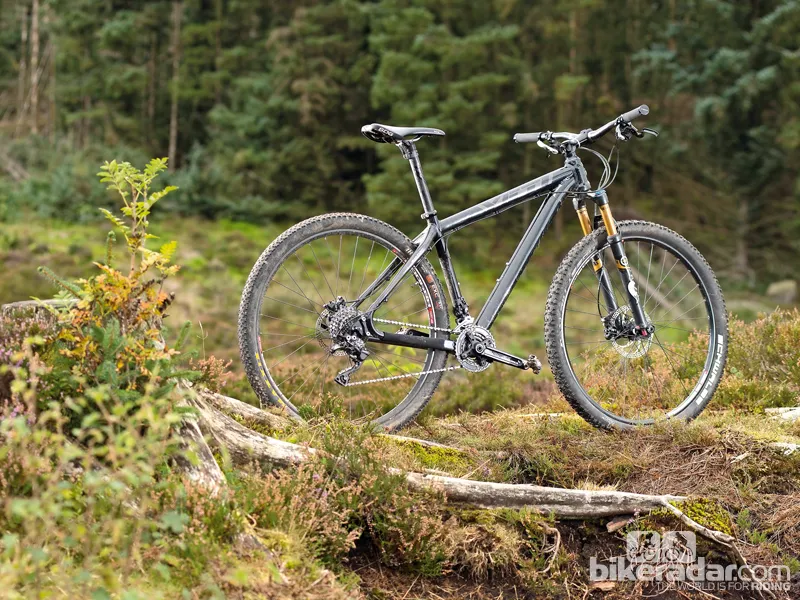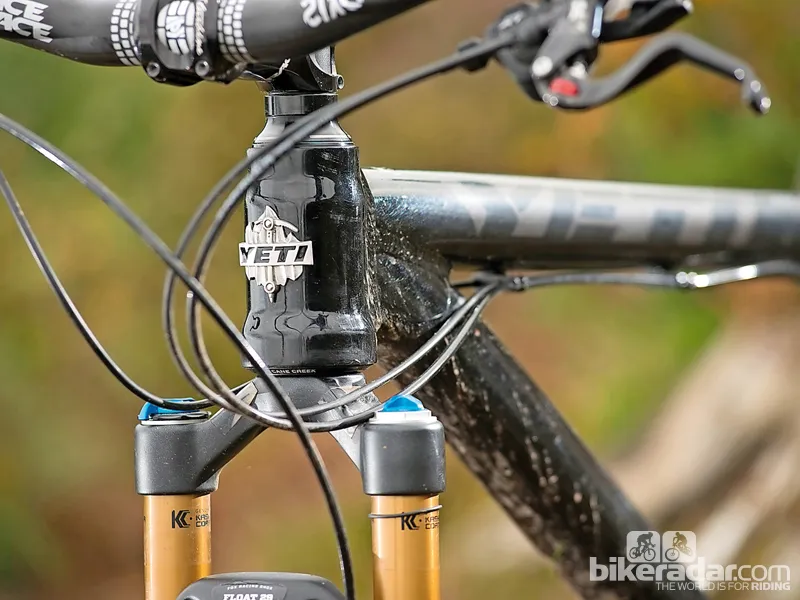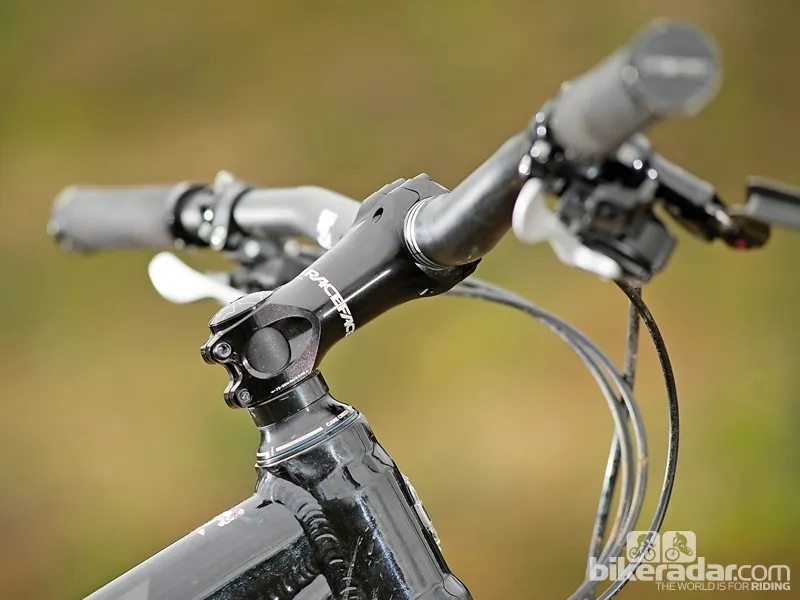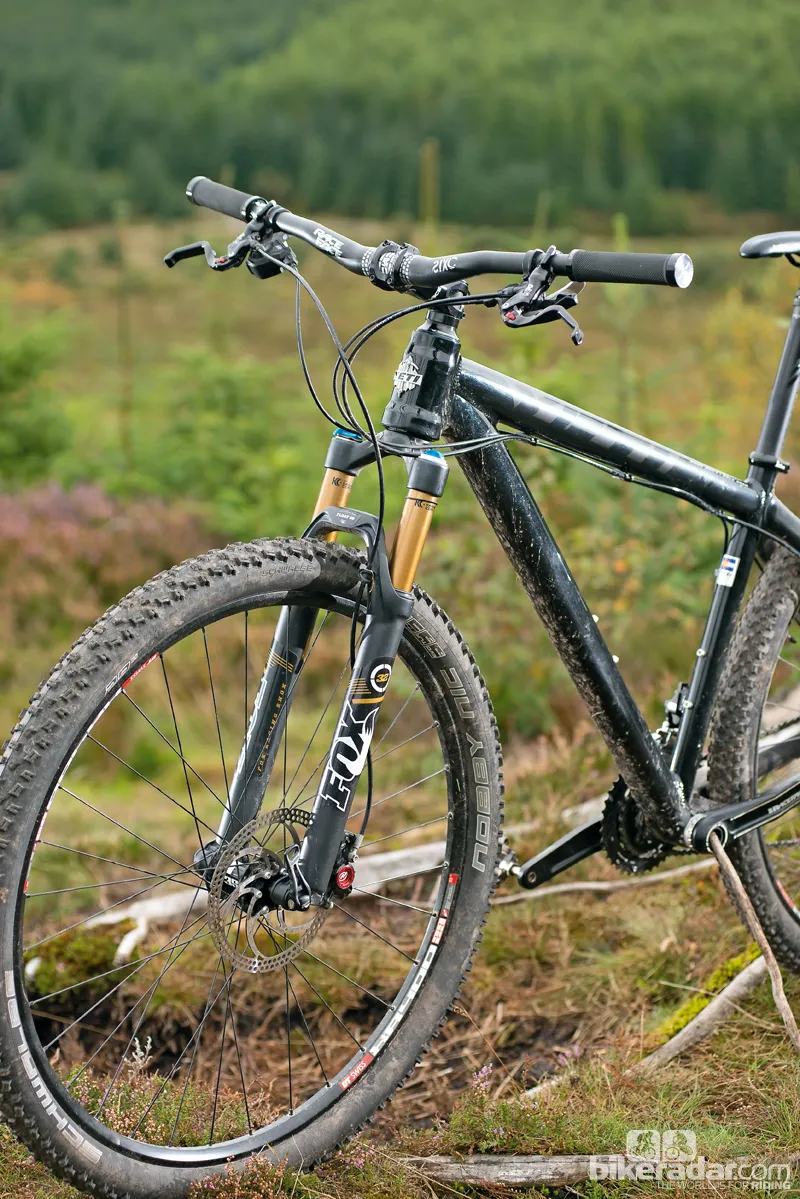With a pedigree that stretches back into the mists of mountain bike time, Yeti is a name that makes riders sit up and pay attention. The ARC Big Top, first seen in 2010 as Yeti moved into 29in wheels, follows in the footsteps of its aggressive stablemates and impresses over just about any terrain.
Frame and equipment: "a bulldog of a bike"
One look at the frame confirms the hardcore intent. It's a bulldog of a bike – large diameter alloy tubes ooze purposeful strength and capability, while a tapered headtube and removable chainguide mount indicate an intent over and above standard cross-country. Bolt-on cable guides that are compatible with full-length outers will appeal to UK riders too (other countries with less amiable climates are also available).
A frame weight of 4lb isn't exactly featherweight cross-country either, but promises durability and strength.
Initially designed as a full alloy bike, the Big Top was quickly found to be too stiff for everyday riding. The solution was unusual – a carbon rear triangle melded to the alloy front to take the edge off. While we never tested the alloy bike so can't vouch for it, the 2013 Big Top is still a super stiff frame that, although still fairly harsh to ride, is presumably significantly less so than if the whole bike had been constructed of metal.
Topping off the frame feature list are the replaceable dropouts, so it can take on any guise from fully adjustable singlespeed, through 135mm quick-release to 142x12 bolt-through at the back. This makes it tremendously flexible and more likely to grow with your needs as the fancy takes.
Ride and handling: lively and powerful
Throwing a leg over the Big Top highlights one of its real strengths. Power. Press the pedals and it feels like everything is funnelling directly through the bottom bracket and into the wheels. Climbing is lively – that's something that every tester mentioned – and it's aided by the flow and bump-munching characteristics of the 29er platform.
When the trail starts to twist that rock hard front end just goes where you point it, holding sharp lines with its 70-degree head angle and slightly front-heavy riding position. It needs commitment, but push on through and you're rewarded by high speeds and great fun. Yes, the riding position is definitely on the racy side, but it's not so extreme you won't enjoy it on your less well-groomed and more tricky trails too – those big 29in wheels steps in where necessary to mellow things out just enough.
The short rear triangle tucks under the seat nicely, helping with power transfer and traction when the inclines get steep and loose. It all adds up to a super-efficient distance machine, as happy buckling down to a long fire road muscle-twitcher as it is skittering over roots and threading its way through nadgery singletrack.
While our test bike featured the recommended 100mm travel Fox fork, it's also rated for 120mm – and our local steep and technical trails were soon demanding something a little more capable that would gently slacken the head angle (by a degree or so) while it was at it.
So on went an identical Fox stretched out to 120mm travel – and dashed our expectations. Far from adding stability and speed, the longer legs just took the edge off the fast and confident handling elsewhere, and rendered the steering a little twitchy for our liking. Reluctantly we went back to the 100mm, and we suggest you stick to that length too.
The rest of the build kit is bang on. Capable, smart and robust XT components do their job without fuss, while the RaceFace Turbine stem, seatpost and cranks are all top-line parts. Appropriately wide 730mm RaceFace carbon SIXC bars take the worst of the trail buzz off that super-stiff front end, but a long day in the saddle still leaves you feeling a little like you've been working a heavy machine gun.
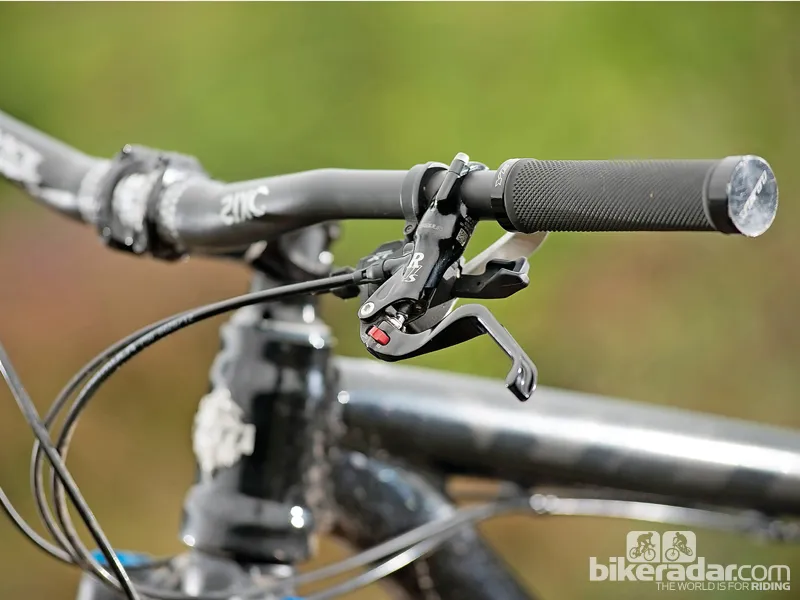
The Formula R1 brakes are light and powerful
The DT Swiss XR400 rims on 350 hubs have stood up stoically over the lengthy test, with neither a complaint from the bearings or deflection of the rim over several thousand kilometers – not bad at all.
The only parts we swapped during the test were the 90mm stem, ditched for a stubbier 70mm, and the front Maxxis Ikon tyre. They're good, but we need something with a little more tread forour soft conditions.
There are only a few minor detail drawbacks. On loamy and muddy trails those plate-style braces across the chain and seatstays accumulate more grime than standard bar brace styles, and while the interchangeable 'chip' dropouts would come in handy for a change of setup, we took a few days to narrow a particularly annoying creak down to both sides loosening at once. A judicious tightening and application of threadlock fixed it, but still – irritating.
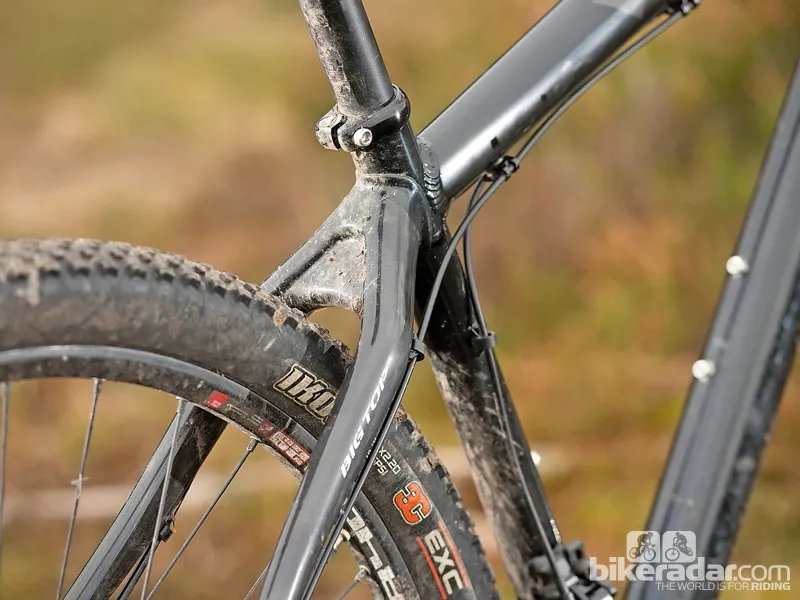
The brace across the seatstays tended to collect mud
Neither of these things even approach deal-break status of course, but were slightly disappointing nonetheless in what is otherwise a very well-made, smartly designed and premium-priced frame.
Know why it's called the Big Top? It's because Yeti originally thought 29ers were clown bikes. Having built one and experienced these wheels themselves though, they changed their minds, and if blasting through the twists and turns of a racecourse or the rooty singletrack of your local woods is your regular ride, the Big Top will entertain you too.
It's a stiff and steep bike though, so if your trails are broken and fast with technical challenges and major inclines, look to more trail-friendly options. The Big Top is unforgiving of rough or extreme terrain, and stiff enough to pass on all its displeasure to you – it's built for speed and accuracy, but on the right kind of smooth, flowing trails, that's exactly what it delivers.
